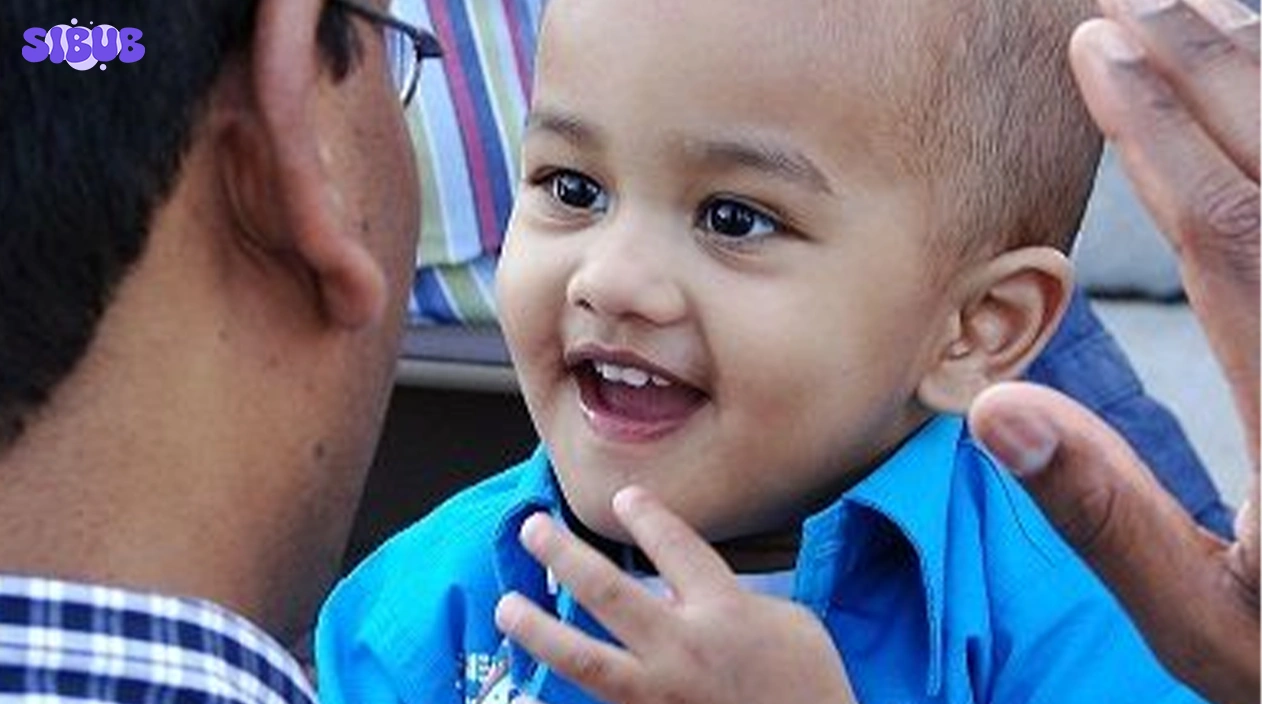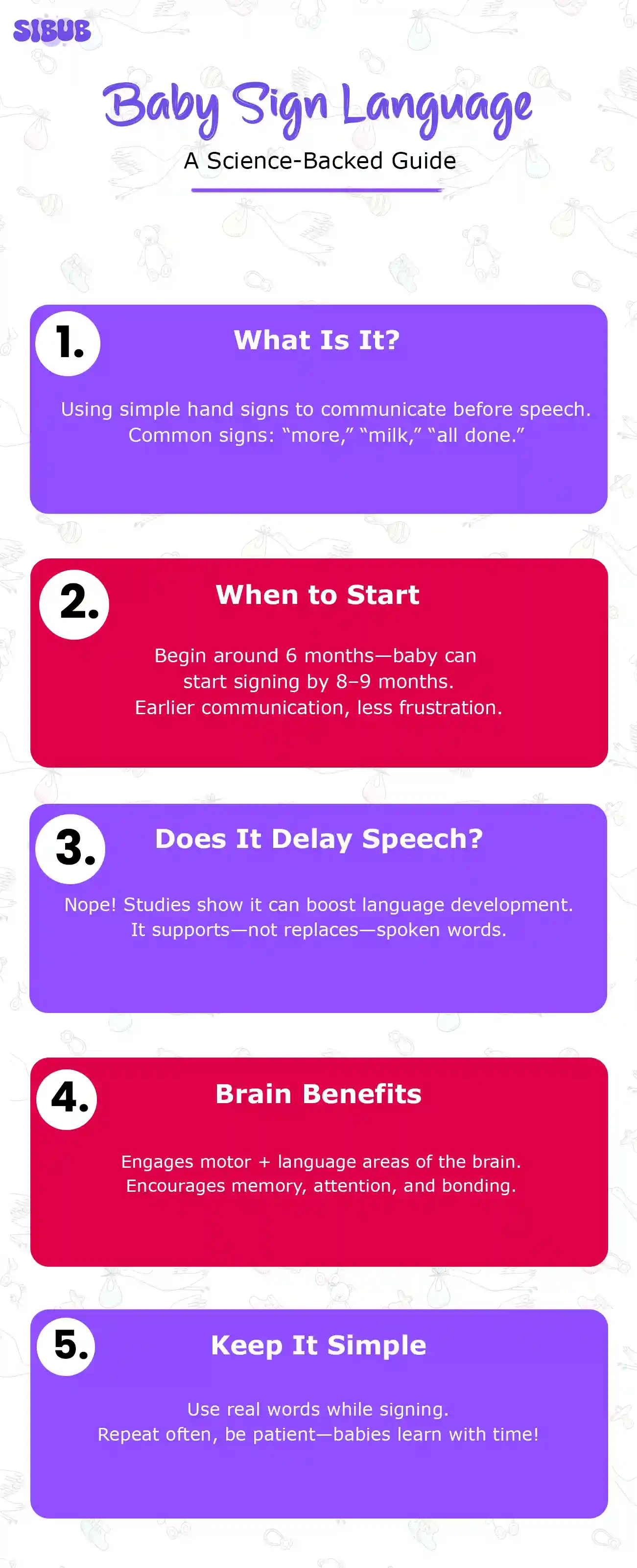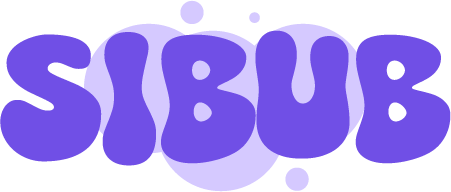Experts believe that language acquisition begins from infancy and the period from a child’s birth and sixth year approximately is marked as a sensitive phase where a child starts learning a language.
What is infant sign language?
Infant sign language has been in use and being studied for decades now. Susan W. Goodwyn and Linda P. Acredolo, both leading developmental psychologists In a study found that hearing infants started using gestures a mean of 0.69 months before their first vocal utterances when hearing parents were educated to promote the use of symbolic gestures (e.g., palms up for “Where is it?”). Parents may use simple signing and symbols with their baby before they start talking or if the child is going through some difficulty communicating. These signing and symbols may involve various hand gestures, facial expressions, boy language and lip patterns.
Why do I need to teach infant sign language to my child?
Now the question arises what is infant sign language and how to teach baby sign language?
While it takes some time for children to start communicating with words and language. They begin to use eye contact sounds, and gesturing to communicate before speaking. Thus, even in early stages of children’s development parents can use infant sign language to communicate with their children. They can be shown single sign language for babies to convey their basic wants and needs. infant sign language can be helpful for children to ease up their frustration and control their environment.
Visit: How to Play Hearts: Simple Card Game Rules to Learn
How to teach Baby sign Language?
There are various guide books for parents to follow for infant sign language. We will discuss few simple tips for infant sign language:

Verbal communication with the signs
Experts advise that when using sign language with your child, always use spoken language. This technique can develop their language acquisition along with their understanding of concepts. This also helps them to link the gestures with the words.
Eye Contact
Engaging with the child is important for symbolic communication as it will help them stay attentive to what you are trying to communicate.
Sign for the most relevant topic with your child
You should look for which things have caught your child’s attention to reinforce the meaning. For instance, if your child is looking at a certain object or toy sign to represent that object.

Discover: Tangram Activities for Kids – Fun Learning with Shapes & Puzzles
What are the gestures you can use to teach sign language for two year olds?
Here are some signs of useful words that you can teach you child:
Waving (“Hello,” “Bye-bye”)
Model waving during greetings and goodbyes.
Gently guide the child’s hand to wave while saying “Hi!” or “Bye-bye!”
Repeat consistently at natural times (e.g., when someone enters or leaves).
Arms up (“Pick me up?”)
Say “Up?” and raise your own arms when offering to pick them up.
Encourage children to raise arms when they want to be held.
Pick them up immediately after they gesture to reinforce communication.
Head shake (“Yes,” “No”)
Shake your head for “No” and nod for “Yes” while speaking the word.
Model the gestures during everyday choices (e.g., “Do you want more?”).
Acknowledge when they mimic the motion: “You shook your head no!”
Pushing away with hands (“I don’t want that.”)
Offer an item the child may refuse and watch for hand movements.
If they push it away, say, “You don’t want it. That’s okay.”
Encourage this gesture as a respectful way to say “no.”
Clapping hands (“Let’s play,” “Yay!”)
Clap during songs, celebrations, or playtime.
Encourage children to mimic clapping while saying “Yay!”
Praise them for participating and make it fun.
Explore: 6 Signs Your Child Needs Help – A Guide to Therapy Kids
Kissing or blowing kisses (“I love you.”)
Blow kisses when saying goodbye or goodnight.
Guide the child’s hand to mouth and outwards while saying “Mwah!”
Reinforce with affection and positive attention.

Pointing to desired toy when given choices
Offer two toys and ask, “Which one do you want?”
Point to each while naming them to model the action.
Celebrate when a child points: “You picked the ball!”
Facial expressions to convey emotions (happy, angry, sad)
Exaggerate your own facial expressions during play and reading.
Label emotions (“You look happy!” or “That made you sad.”)
Use mirrors to explore expressions together.
Routine games and fingerplays (“Itsy Bitsy Spider”)
Sing familiar songs with hand movements (e.g., “Itsy Bitsy Spider”).
Gently guide their hands through the motions.
Repeat often to build memory and motor coordination
American sign for please
- Open your hand flat (like a “5” handshape).
- Place your palm on your chest, in the center.
- Move your hand in a circular motion on your chest—clockwise for your perspective.
Important concerns to before you start sign language for babies:
Learn More: Top One Minute Challenges for Middle Schoolers: Fun & Easy Game Ideas
Is baby sign language the same as ASL (American Sign Language)?
According to Merriam Webster American Sign Language (ASL) is a system of articulated hand motions and their positioning in relation to the upper body that conveys meaning in sign language for the deaf children. While Baby Sign is the simplified signs parents use to communicate with their infants as the children who are that young do not have the abilities to learn proper ASL.
Still, baby sign language is somewhat similar to baby ASL but this is not always the case as it involves a loser version of signs for individual words.
The reason baby signing is employed is it teaches basic terms like “milk,” “more,” “tired,” and others that a youngster might utilize in their everyday life. Because the infant can communicate their wants before they can use words, baby signing is an excellent method of communication between the baby and caregiver. This helps the parent better comprehend their child’s desires and lessens the infant’s frustration.
Can teaching infant sign language delay their verbal language learning?
It is a myth and debunked; as Susan W. Goodwyn, Linda P. Acredolo, and Catherine A. Brown developmental psychologists “strongly support[s] the hypothesis that symbolic gesturing facilitates the early stages of verbal language development.”
When can you start children’s sign Language?
According to a study published by the National Institutes of Health (NIH) Parents can decide to teach their children sign language as early as 4-6 months of age and expect them to respond by 9 to 11 months.
Check this out: Baby Empathy: Do Babies Really Feel It? What Science Reveals
Final Thought:
While not creating a full language like ASL, sign language for infants gives young ones a helpful and trustworthy way to connect and share. Reaching from developmental science, it helps a baby’s mind, emotions and social life grow by connecting what they know with what they can say. It’s not only the information on the cards that helps, but also the regular way parents interact with their babies that matters most. You can use infant sign language to help your child communicate or to increase their confidence and it is a wonderful way to understand them and let them feel cared about.
